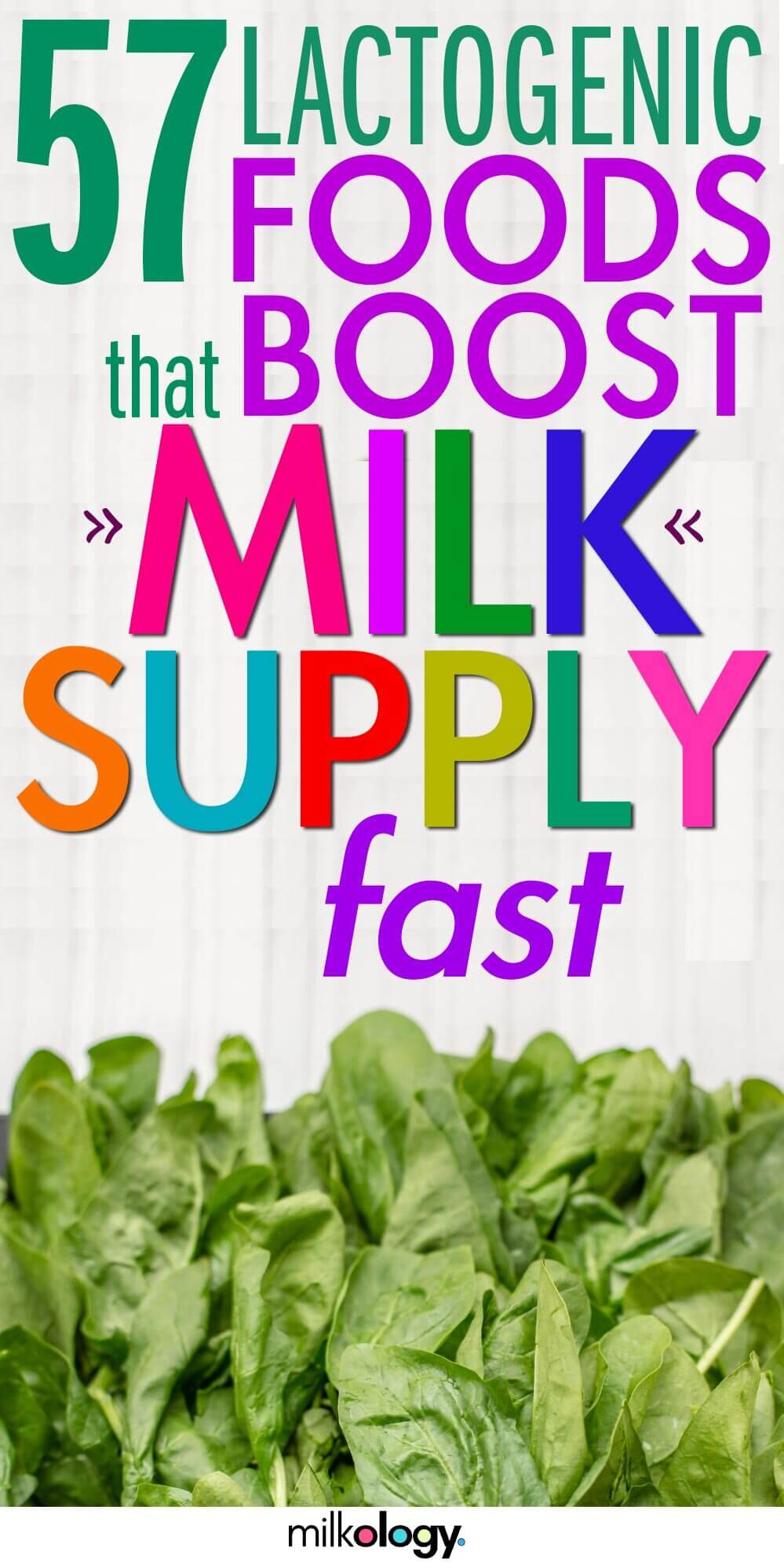57 Amazing Lactogenic Foods to Increase Milk Supply
Throughout history women have consumed specific foods to support their milk production and naturally boost their breast milk output and quality.
Lactogenic foods (also known as galactogogues) are foods, spices and herbs that contain specific nutrients that support lactation.
The word LACTOGENIC comes from the latin word ‘LAC’ which means “milk,” and ‘GENIC’ which means “producing.”
So lactogenic foods are foods that help produce milk!
It’s important to know that everybody is different - and while some foods will influence the milk supply for some women, it may not for others.
…and GOOD NEWS!
All of the following are healthy and nutritious on their own, so it won’t hurt to try them out and see what works for you!
(this post may contain affiliate links)
Disclaimer: The absolute non-negotiable to maintaining and increasing milk supply is removing plenty of milk… and often. Galactagogues will not work without adequate and frequent milk removal.
LACTOGENIC FOOD LIST
Dark Green Leafy Vegetables
Contains minerals, vitamins, enzymes and phytoestrogens. Green leafy veggies are a powerhouse of iron and calcium and are natural diuretics, which helps the body retain less water and boosts milk output. They’re also considered “blood builders,” and since breast milk is made from your blood supply it’s no wonder that consuming green leafy vegetables is beneficial for milk production.
Spinach
Swiss chard
Mustard greens
Dandelion greens
Kale
Arugula
Beet leaves
Broccoli
Seaweed
Watercress
Collard greens
Did you know?
You can’t change the amount of fat in breast milk, but you CAN change the type of fat.
So be sure to add good, healthy fats to your diet whenever possible.
Studies show that maternal levels of DHA (one of the most important types of omega-3s) DIRECTLY influences the levels of DHA in breast milk.
So take a daily, high-quality DHA fish oil supplement to ensure you and baby are getting enough.
We love THIS gummy DHA supplement, because it tastes like strawberries (and not yucky fish oil).
Grains
Contain a high amount of polysaccharides, specifically beta glucan, which encourages prolactin secretion (the hormone responsible for milk production). Barley is the richest dietary source of beta glucan while oats contain the 2nd highest levels.
Barley
Oats
Millet
Brown rice
Definitely give THIS lactation cookie a try. It contains TONS of oats and is the best tasting out there! (we've tried them all)
Legumes
Contain Omega 3 fatty acids which transfers to breast milk after consumption and helps baby’s brain development.
Lentils
Peas
Mung beans
Chickpeas
Black beans
Kidney beans
Lima beans
String beans
Nuts & Seeds
Contain protein, calcium, healthy fats, and tryptophan, which stimulates the release of prolactin. They also improve the quality of breast milk by increasing the healthy fat in your milk
Almonds
Cashews
Macadamia nuts
Poppy seeds
Caraway seeds
Anise seeds
Flax seeds
Coriander seeds
Sesame Seeds
Orange root vegetables
Contain beta-carotene which is needed in extra amounts during lactation
Carrot
Beet
Yam
Sweet potatoes
Dried Fruits
Rich in calcium, fiber, vitamins A and C, potassium and tryptophan. Plus, they travel well and are perfect for snacking.
Apricots
Dates
Figs
Oils and fats
The kinds of fat a mother consumes will influence the composition of fats in her breast milk. It’s important for women to choose healthy fats.
Butter
Coconut oil
Cold-pressed olive oil
Sesame oil
Flax seed oil
LACTOGENIC FOOD ALL-STARS!
Brewers Yeast
Many mothers have noted significant boosts to their milk supply after consuming brewers yeast. It contains chromium, vitamin b complex, proteins and phytoestrogen. As a bonus it may also help get rid of your postpartum baby blues.
Green Papaya
Contains enzymes, vitamins, and minerals, including vitamins C, A, B, and E. Green papaya is a popular lactogenic food across Asia and is the unripe papaya fruit. It needs to be simmered until soft before consumed.
Asparagus
Asparagus is one of the best plant-based sources of tryptophan, an essential amino acid that stimulates prolactin release.
Fennel
Although it’s available in seed form, fennel is best eaten as a whole food, either raw or cooked. Contains phytoestrogens and tryptophan.
Ginger
Consuming ginger is helpful for the letdown and milk flow. You can also have ginger ale!
Lactation cookies
Contain a triage of galactagogues - oats, brewers yeast, and flax seed.
Lactogenic herbs & spices
Disclosure: Herbs and spices are powerful galactagogues. Keep an eye on your supply and adjust usage as necessary. Also, before taking any supplement versions of lactogenic foods, talk to your doctor or a lactation consultant.
Dill
Caraway
Anise
Black pepper
Basil
Marjoram
Turmeric
Garlic
anti-lactogenic foods
Foods, spices and herbs that can decrease milk supply.
(use sparingly or not at all)
Alcohol
Sage
Parsley
Peppermint
Our 3 Fav Breastfeeding Products
🌛 1. This nursing bra is the absolute BEST for breastfeeding at night. It’s super comfy and made of the softest material ever.
💪 2. Boost supply and tone up postpartum. Grab this 28-day plan made just for breastfeeding moms — 50+ slimming, milk-boosting recipes and quick 20-min workouts (yep, even baby-wearing + pelvic floor ones!). Get 10% off Milky Mama’s Postpartum Plan using the code STACEY10 at checkout
🤱 3. If your nipples are sore,these are an absolute lifesaver. They’re super cheap, can be worn for multiple days (perfect when you’re trying to get a good latch), and are soooo soothing.
Related Articles: How To Increase Breast Milk In One Day


